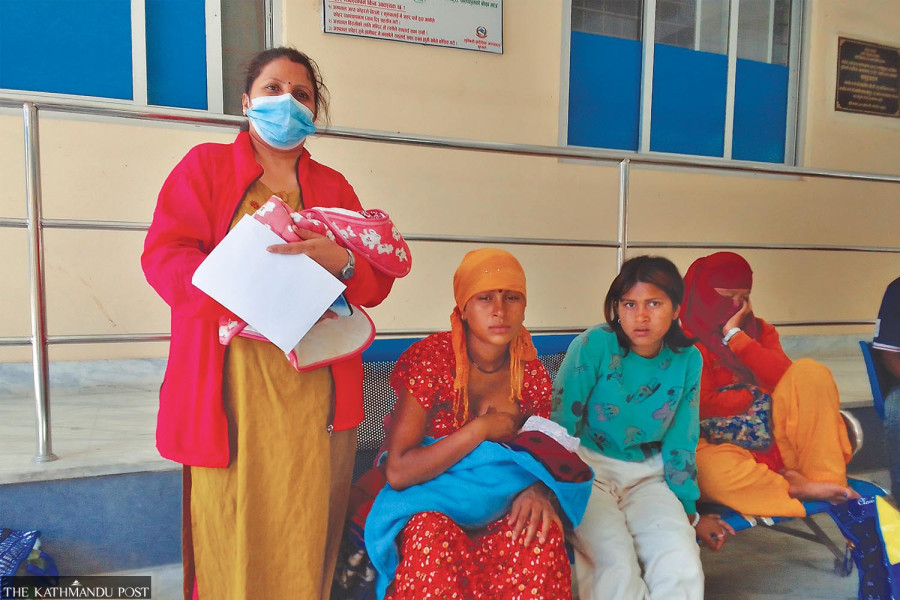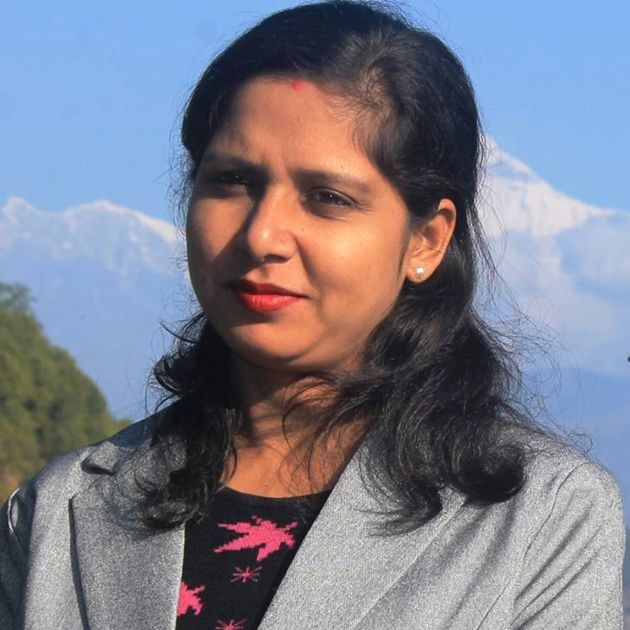Health
Lumbini fails to curb maternal mortality despite good infrastructure
Lumbini has the highest mortality rate among all seven provinces in the country at 207 deaths per 100,000.
Amrita Anmol
Maya Thapa, a 30-year-old resident of Rolpa Municipality ward 10, went into labour on June 1, 2022 but she was taken to the district hospital only the next day. At the hospital, Dr Prakash Bahadur Budha informed her relatives that she had twins. Her blood pressure had shot up and she needed immediate surgery. The doctor referred her to hospitals in Dang and Butwal.
But Maya’s relatives took her home instead. After two days of labour pain, she gave birth to twins at home on June 3. She suffered from postpartum haemorrhage and fell unconscious immediately after the delivery. She did not regain consciousness. “Maya could have survived if she was taken to a well-facilitated hospital on time,” said Budha.
In the fiscal year 2021-22, a total of 4,100 pregnant women in Lumbini province did not go for institutional births and delivered their babies at home. Fourteen among them died of delivery complications; 12 women breathed their last while being rushed to the health institutions. Health professionals say these were all avoidable causes and with timely medical intervention, the women would have survived.
Lumbini province, which comprises six Tarai and six hill districts, has an alarming maternal mortality rate. As many as 74 women died due to pregnancy and delivery complications in the last fiscal year. Two Tarai districts—Banke and Rupandehi—were top of the list with 32 and 23 maternal deaths, respectively. Four women died in Bardiya; three each in Palpa, Rolpa and Pyuthan; two each in Dang and Kapilvastu; and one each in Arghakhanchi and Gulmi.
Data from the Ministry of Health and Population suggests a yearly increase in the maternal mortality rate in the province. In the fiscal year 2017-18, 53 women died of pregnancy and delivery complications while 54 maternal deaths were reported in the fiscal year 2018-19. In the fiscal year 2019-20, 71 maternal deaths were reported while the number stood at 72 in the fiscal year 2020-21.
Lumbini province has a relatively better health infrastructure in comparison to some other provinces. The province is home to the three biggest hospitals in the country—Lumbini Provincial Hospital, Bheri Hospital and Rapti Academy of Health Sciences. To ensure safe delivery, 406 birthing centres have been set up in the Province. There are 22 hospitals with C-section facilities. The provincial government has deployed 84 nurses for door-to-door service for pregnant women and new mothers under the safe motherhood programme.
However, none of the steps taken by the government has been able to curb the maternal mortality rate in the province. As per the national census 2021, Nepal’s maternal mortality rate is 151 per 100,000. But the maternal mortality rate of Lumbini is 207 per 100,000, which is the highest among all seven provinces in the country.
Kaushal Raj Bhandari, the focal person at Lumbini Health Directorate, attributes the alarming maternal mortality rate in the province to the absence of well-equipped hospitals in remote areas leading to delays in medical intervention.
However, women’s rights activists who are vocal proponents of reproductive rights of women and safe motherhood say there are more reasons for the high mortality rate in the province.
Gyanu Paudel, a rights activist for the reproductive health of women, says that the family of pregnant women must take more accountability for the well-being of the mother and that the government authorities should implement plans and policies catered to every woman and not just those in a position to visit a well-facilitated hospital.
“The availability of sound health infrastructure must be clubbed with responsible action from the family and society to ensure mothers don’t die an untimely death,” she said.
Article 38 of the constitution of Nepal affirms that every woman shall have rights to safe motherhood and reproductive health. Safe Motherhood and Reproductive Rights Act 2018 was enacted to make health services safe, qualitative and accessible for safe motherhood.
Unsafe home delivery is still a major challenge in controlling maternal mortality in the province. Only 13 of 109 local units in the province have successfully reduced the home birth rate to zero as of now.
The poor quality of services in health facilities outside major urban centres also contributes to the avoidable deaths of pregnant women and postpartum mothers. The lack of skilled human resources and necessary equipment in health institutions in rural areas leads to patients being referred to big city hospitals, inadvertently delaying urgent medical intervention.
According to Sunita Gyawali, a nursing officer at the health ministry, despite Lumbini province having a good health infrastructure, the maternal mortality rate is still high because well-equipped hospitals are still inaccessible to most women in rural areas.
“Pregnant women from rural areas suffer because of delays in finding appropriate health facilities,” Gyawali said. “Postpartum haemorrhage is one of the reasons women are losing their lives.”
Twenty-three percent of maternal deaths every year can be attributed to excessive bleeding during or after childbirth, according to Gyawali. “If they had sought timely medical help, they would have been saved. Postpartum infection, high blood pressure during pregnancy, unsafe delivery and abortion are other leading causes of high maternal mortality rate in the province.”
Anisha MC, aged 24, of Jhimruk Municipality ward 7, died in February 2022 for a lack of a well-facilitated hospital with specialist service close by. She was taken to Pyuthan Hospital on February 25 where she underwent surgery the next day. “But she had further health complications after the surgery. The hospital referred her to Butwal. She died on her way to Butwal,” said Binod MC, the victim’s relative. According to him, Anisha died due to the lack of specialist health services in Pyuthan Hospital.
The federal government’s President Women Upliftment Programme is designed for needy pregnant women and postpartum mothers. Under the programme, pregnant women in remote areas receive medevac services free of cost. Several villages of Rukum (East), Rolpa, Pyuthan, Arghakhanchi, Palpa and Gulmi districts of Lumbini have been selected for the programme.
“But the programme has not been as successful as expected,” said Bhandari, the focal person at Lumbini Health Directorate. “Many pregnant women and postpartum mothers do not get immediate air rescue. The shortage of obstetricians, gynaecologists and trained nurses has affected the programme.”
The Lumbini provincial government allocated Rs60,000 to each local unit to manage free ambulance service to help pregnant women reach nearby health facilities quickly. It also provided Rs200,000 each to the district-level hospital in case the pregnant women and the postpartum mothers need to be taken to well-facilitated hospitals in case of emergencies.
The federal government provides allowances—encouragement and transportation—if a pregnant woman goes for regular health checkups at least four times during pregnancy, and opts for institutional births.
The newly unveiled report about maternal mortality shows that 151 women in every 100,000 died from maternity-related complications. The study was carried out in 2021.
Paudel, the rights activist, said establishing hospitals and introducing policies is not enough to curb maternal mortality rate. “There must be a practical application of all government plans and programmes aimed at pregnant women and new mothers. Services related to pregnancy, safe delivery, postpartum and neonatal care should be lobbied through the rights-oriented views,” Paudel said. “A woman getting pregnant means she is going to give birth to a citizen of the nation. The state, therefore, should enhance access to quality health services to provide treatment to every woman facing pregnancy complications. Creating awareness about the need to provide the best care to pregnant women and new mothers must be prioritised.”




 9.12°C Kathmandu
9.12°C Kathmandu














